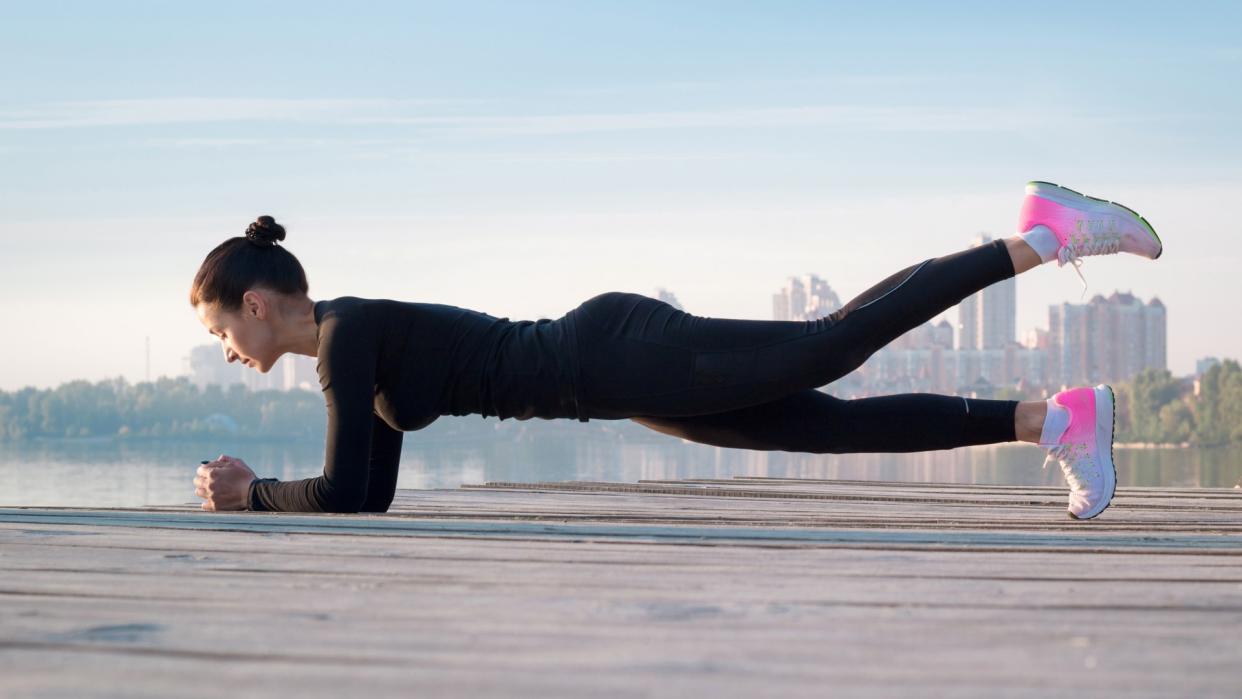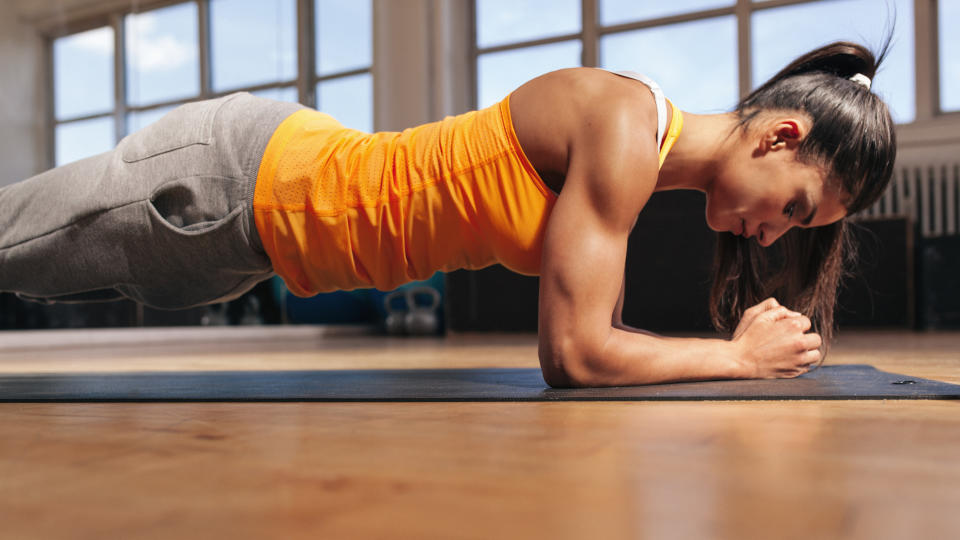I did 70 single-leg commando planks every day for one week — here's what happened

When it comes to our Tom's Guide fitness challenges, we've tackled many plank challenges, too, but 70 reps of single-leg commando planks each day for one week has been one of my favorites so far.
Of all the best plank variations around, this one is my go-to when I want to add dynamic movement to my ab-searing plank workouts. Unlike standard planks like forearm or straight-arm holds, this entails moving from a straight-arm position to forearms and back again for however many reps you program, while keeping one leg raised in the air at a time.
I like to perform core workouts on one of the best yoga mats, which helps protect my elbows during up-down planks like commandos. So I rolled mine out, warmed up, then dived into my first day of reps. Here's what happened.
How to do single-leg commando planks
This isn’t my first commando plank rodeo, so I’ve written a quick guide on how to do commando planks to help you learn the proper form if you’re new to them. Here’s a quick rundown of cues for single-leg commandos:
Start in a straight-arm plank position on your mat, shoulders over wrists and hips aligned with your shoulders.
Brace your stomach and squeeze your shoulders, quads and glutes to create a strong and stable torso.
Lift your left leg into the air to hip height, keeping your hips square to the mat.
Lower your left elbow onto the mat beneath your left shoulder, followed by your right.
Pause on your forearms, press your left palm back onto the mat, followed by your right hand, to the starting position. Continue for reps, then switch legs.
Remember to switch the leading arm as you move so you don’t overload one side of the body.
I did 70 single-leg commando planks every day for one week — here’s what happened
Having tested 90 commando planks every day for one week last year, I wanted to see how removing one leg from the equation would scale things up.
I had to focus more on my form
Lifting one leg into the air at a time tests balance, core, shoulder and hip stability and coordination, and there are a few giveaways when your form starts to veer off. I performed my reps in the mirror so that I could check my butt didn’t rise into the air and my hips stayed square without turning to one side.
I also focused on conscious compound contraction using the three B’s — butt, belly and back — squeezing as many muscle groups as possible, including my quads. Being more aware of how your muscles are contracting can help increase mind-muscle connection, helping to activate and target the necessary muscle groups and get the most from the exercise.
I tired a lot quicker
We know that the core strengthening exercise targets nearly every major muscle group, including the chest, back, glutes and legs, and the lesser-known stabilizers like the hip flexors and deeper core muscles.
Unlike the standard plank, which uses isometric contraction (keeping muscles under tension without them shortening or lengthening), this dynamic plank increases cardiovascular output. I performed all 70 reps in one go every day, so this really jacked up my heart and got my entire body working hard, especially my stomach, arms and shoulder muscles.
By the end of the 70 reps, I felt pretty beat.
My hips swung a little
When you lift one leg into the air, it sends the body off balance. You have to work harder to keep your hips level and torso tight and move without swinging your hips. As I got tired, I noticed this happening more often and took a second to reset before continuing with my reps. Sometimes your leg height can play a factor here, so if you notice the same, make sure your leg is extended and engaged and your foot is aligned with your hip.

My upper body felt torched
Commando planks, or “military planks,” hit your chest, arms and shoulders harder than your average plank. Last time I did commando planks for a fitness challenge, I added a weighted vest around days two to three, but it didn’t feel necessary this time around. Instead, I focused on working steadily and completing as many reps as possible, taking a very brief rest if needed.
I wouldn't recommend it for beginners
Although 70 reps isn’t a groundbreaking number, repetitive exercises, when performed every day, can add up. If you’re new to single-leg commando planks but want to give them a go, break your reps into manageable sets of 10 reps, or perform commandos from your knees. Popular workout methods like CrossFit and Hyrox adopt high-rep strategies, but not necessarily every day of the week.
I liked that the move tested my coordination
Commando planks can fall under the unilateral training category in that you switch emphasis from one side of the body to the other while you move. Taking one leg away forced me to work on tripod positioning with my two arms and one leg, testing neuromuscular coordination, balance and upper body strength. This also tested my working hip, shoulder, arm, wrist and leg strength as I moved up and down without touching the floor with my raised leg.
Verdict
As I pushed my way through the last of my 70 reps on day seven, I thought about what, if anything, seven days of one move had taught me. Firstly, I’d never program the same thing every day for clients, and as this was a one-off fitness challenge, I knew that I wasn’t overloading my body too much — I had already assessed and checked in with what I was capable of.
Although 70 reps isn’t a groundbreaking number, repetitive exercises, when performed every day, can add up.
Lifting one leg away during the reps definitely increased effort and intensity for me, and it’s a great way to scale things up if you need a new challenge. That said, of course, I didn’t build strength or develop muscle mass in just a week. And if you plan to try a fitness challenge, choose a rep range that reflects your fitness level.

